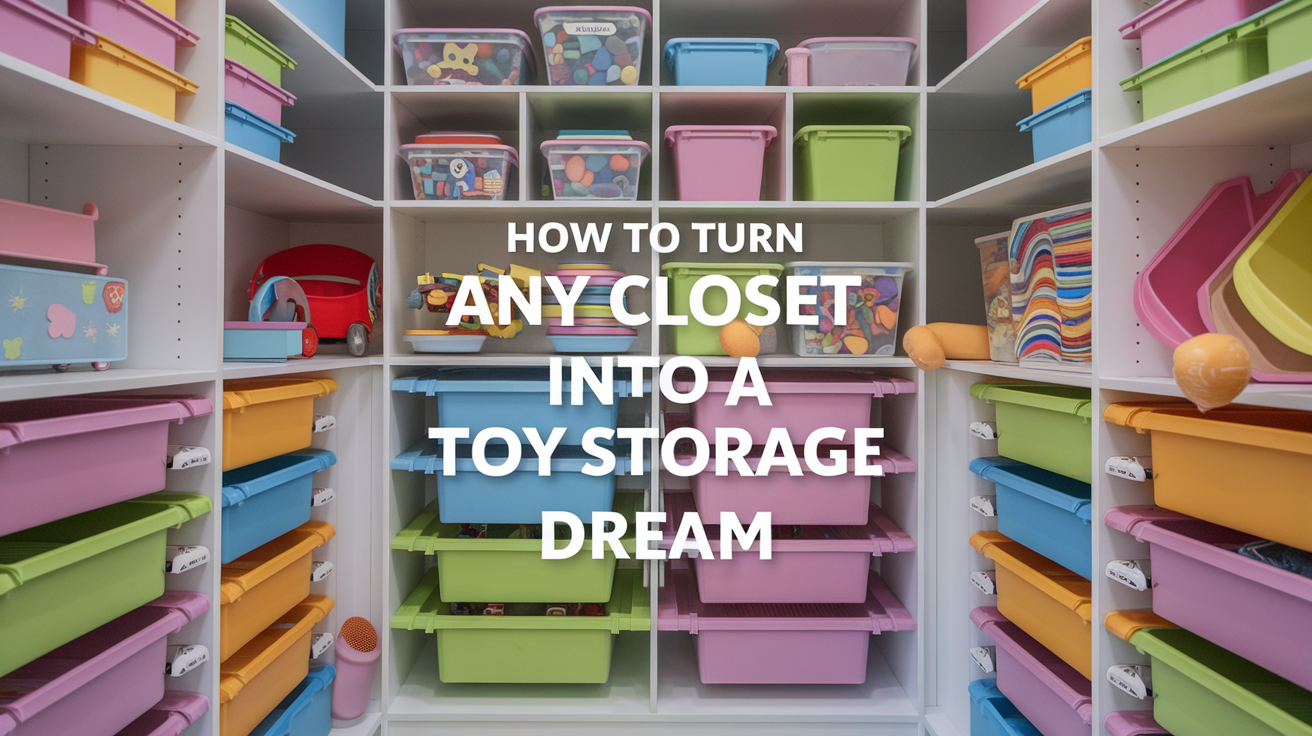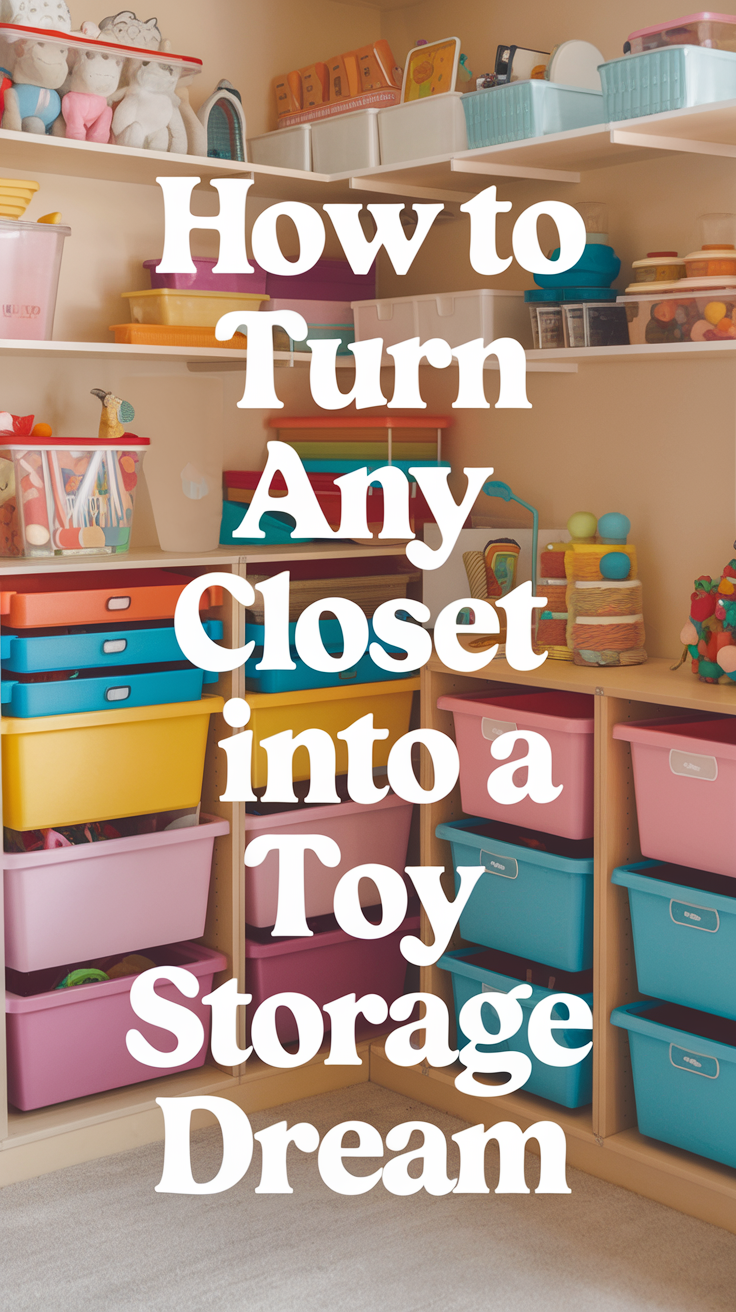
As a parent and home organization enthusiast, I’ve faced the never-ending battle of toy chaos. After countless hours of experimenting with different storage solutions, I’ve finally cracked the code on turning any closet into an organized toy paradise. Whether you’re dealing with a tiny apartment closet or a spacious walk-in, this comprehensive guide will help you create a functional and maintainable toy storage system that both you and your children will love. Let’s transform that cluttered closet into an organized oasis where every toy has its perfect place.
Preparing Your Closet for Toy Storage Success
Initial Assessment and Decluttering
Before diving into organization solutions, we need to start with a clean slate. I remember the overwhelming feeling of staring at my daughter’s closet packed with toys she hadn’t touched in months. Here’s how to begin:
- Remove everything from the closet
- Sort toys into three piles: keep, donate, and trash
- Clean the closet thoroughly
- Measure the space available
- Consider the height accessibility for your children
Understanding Your Storage Needs
Take inventory of the toys you’re keeping and categorize them by:
| Toy Type | Storage Requirements | Access Frequency |
|---|---|---|
| Large toys | Floor or low shelf space | Daily |
| Small toys/pieces | Containers with lids | Weekly |
| Sets/collections | Clear bins | Weekly |
| Craft supplies | Drawer systems | Occasional |
Smart Storage Solutions That Actually Work
Vertical Space Maximization
One game-changing realization I had was the importance of utilizing vertical space. Here’s what works best:
- Over-the-door organizers for small toys
- Adjustable shelving systems
- Wall-mounted baskets
- Hanging organizers with clear pockets
Container Selection Guide
| Container Type | Best For | Price Range |
|---|---|---|
| Clear plastic bins | Building blocks, car collections | $5-15 |
| Fabric boxes | Stuffed animals, dress-up clothes | $10-20 |
| Rolling carts | Art supplies, small toys | $20-40 |
| Drawer systems | Mixed toy categories | $30-60 |
Creating Kid-Friendly Organization Systems
Age-Appropriate Organization
After trying several systems, I’ve found that success lies in making organization age-appropriate. Consider these approaches:
- Picture labels for pre-readers
- Color-coding systems
- Easy-to-open containers
- Height-appropriate placement
- Rotation systems for different toys
Safety Considerations
Safety should always be your top priority when designing toy storage:
- Secure all tall furniture to walls
- Use child-proof locks where needed
- Avoid heavy items on high shelves
- Ensure proper ventilation
- Choose rounded-edge containers
Maintaining Order in the Toy Kingdom
Daily Maintenance Routines
The key to lasting organization is establishing simple maintenance routines:
| Time of Day | Task | Duration |
|---|---|---|
| Morning | Quick toy return | 5 minutes |
| After playtime | Category sort | 10 minutes |
| Evening | Final cleanup | 15 minutes |
Teaching Children to Maintain Organization
Make organization fun and rewarding:
- Create cleanup games
- Use timer challenges
- Implement reward systems
- Lead by example
- Celebrate organizational wins
Making the Most of Limited Space
Space-Saving Hacks
Even the smallest closet can become an efficient toy storage space:
- Use door-mounted organizers
- Install corner shelves
- Utilize vacuum storage bags
- Implement modular systems
- Create zones for different activities
Rotation System Benefits
Implementing a toy rotation system has been a game-changer in our house:
| Benefit | Impact |
|---|---|
| Reduced clutter | Immediate visual improvement |
| Increased toy value | Enhanced play engagement |
| Easier maintenance | Less daily cleanup time |
| Better organization | Simplified storage system |
Conclusion
Transforming your closet into an organized toy storage space might seem daunting at first, but with the right approach and systems in place, it’s absolutely achievable. Remember that perfection isn’t the goal – functionality and maintainability are what matter most. Start small, be consistent, and adjust your system as your family’s needs change. The peace of mind that comes with an organized toy closet is truly priceless.
Key Takeaways
- Start with a thorough decluttering session before implementing any organization system
- Utilize vertical space and appropriate containers for different toy types
- Create age-appropriate systems that children can maintain independently
- Implement daily maintenance routines to keep the organization sustainable
- Consider a rotation system to maximize space and toy engagement
Frequently Asked Questions
-
How often should I reorganize the toy closet?
Plan for a deep reorganization every 3-4 months, with daily maintenance and weekly quick sorts in between. This schedule allows you to adjust to changing toy collections and growing children’s needs.
-
What’s the best way to organize small toys with many pieces?
Use clear, labeled containers with secure lids, and consider sorting by category or set. Small mesh bags within larger containers can help keep pieces of sets together.
-
How can I motivate my children to maintain the organization?
Make it fun by turning cleanup into a game, using timer challenges, and implementing a reward system. Clear labels and easy-to-use containers also encourage independence.
-
What are the most cost-effective storage solutions?
Repurpose existing containers, use dollar store bins, and invest in versatile storage solutions that can grow with your needs. Door organizers and adjustable shelving provide excellent value.
-
How do I handle seasonal or outgrown toys?
Implement a rotation system using labeled storage bins for seasonal items, and regularly assess toys for age-appropriateness, donating or storing those that are no longer suitable.
-
What’s the best height for toy storage?
Keep frequently used toys at your child’s eye level or below. Store less-used items higher up, and always ensure heavy items are stored at adult height for safety.
-
How do I maintain organization with multiple children?
Use color-coding systems for each child’s belongings, create designated spaces for shared toys, and establish clear rules about toy sharing and cleanup responsibilities.
-
What should I do with toy packaging and instructions?
Keep essential instructions in a labeled folder or document box, and recycle unnecessary packaging. For valuable toys, store original packaging in a separate location.
-
How can I prevent toy organization systems from looking cluttered?
Use matching containers, implement a cohesive color scheme, and maintain regular purging schedules. Consider using solid-colored bins instead of clear ones for a cleaner look.
-
What’s the best way to label toy storage containers?
Use a combination of pictures and words for young children, and consider removable labels to adjust as toy collections change. Label both the front and top of containers for easy identification.
